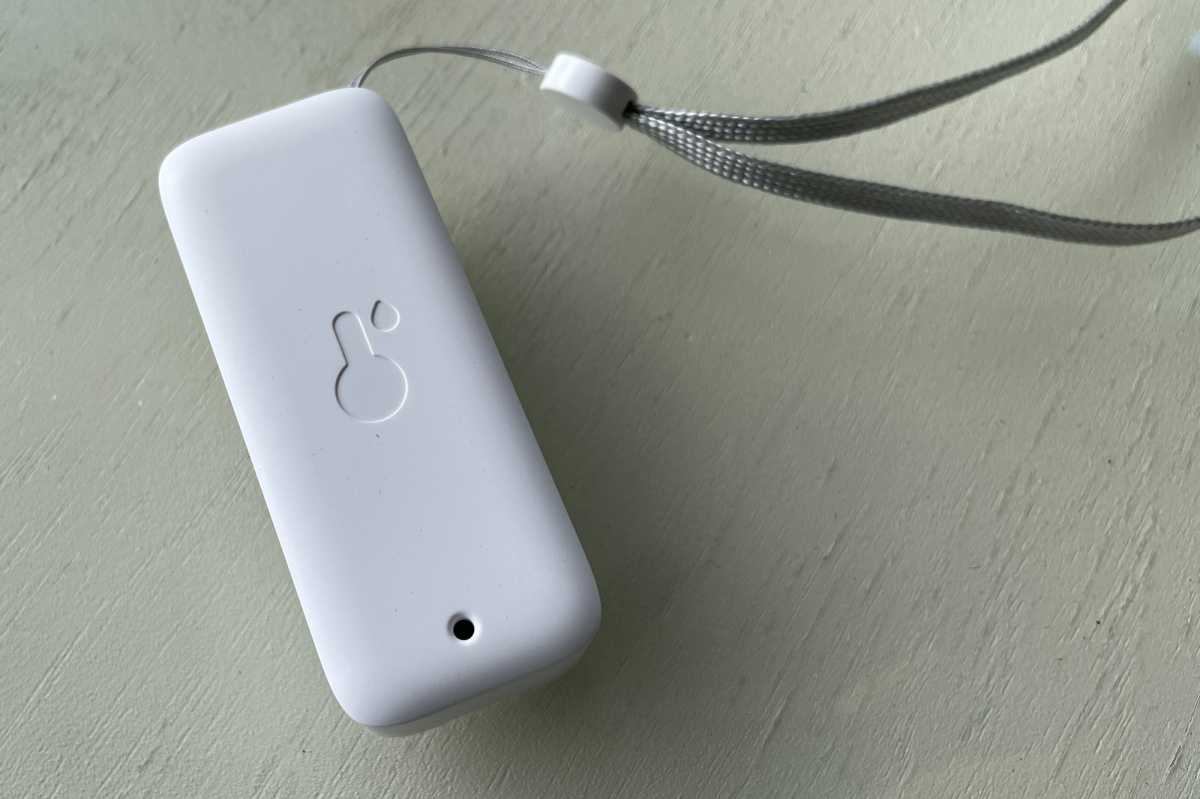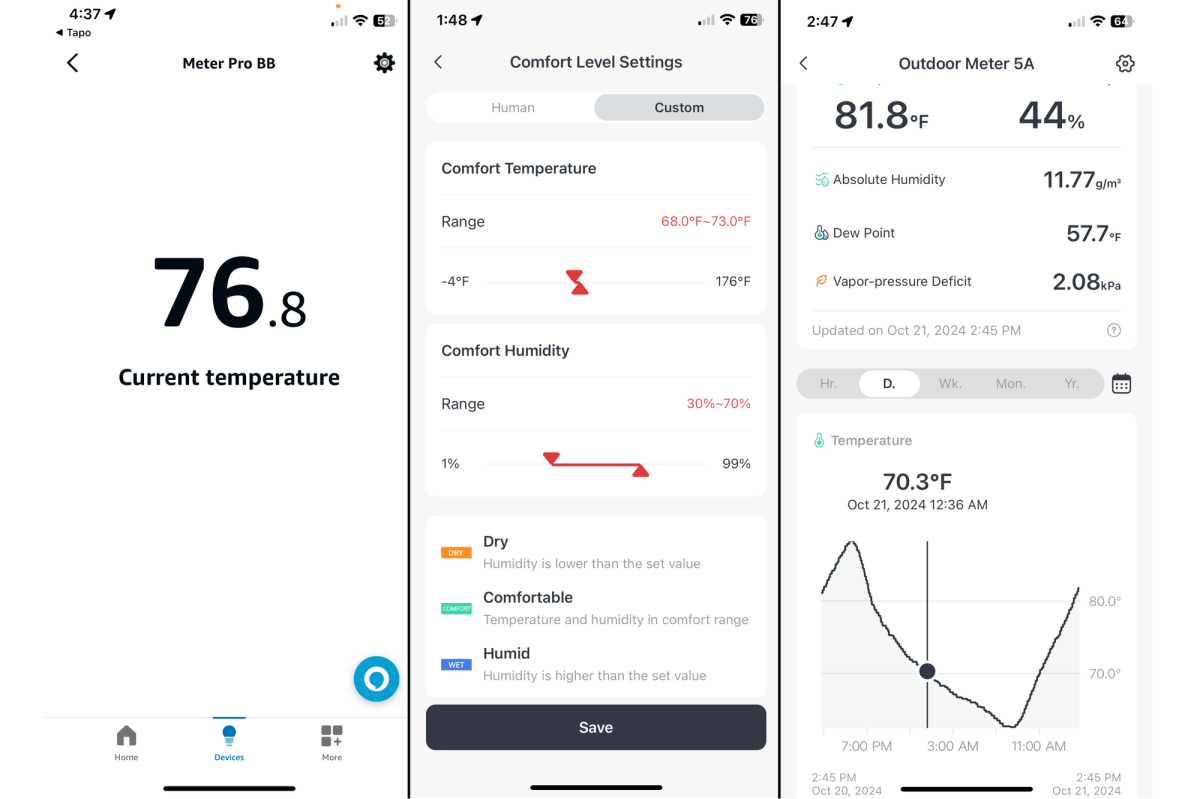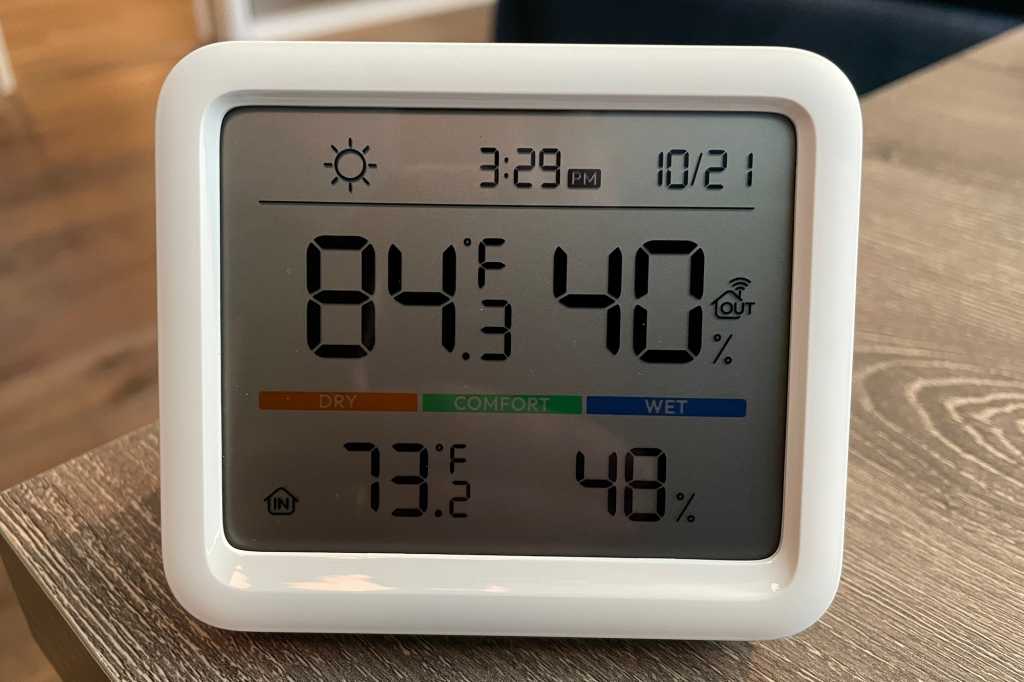Expert’s Rating
Pros
- Inexpensive, and very easy to use
- Extensive logging of multiple climate conditions
- Battery-powered, so no cable needed
Cons
- Requires a SwitchBot hub
- SwitchBot’s hygrometer isn’t strictly required, but you’ll want one for outdoor readings
- Various persistent user interface bugs
Our Verdict
This battery-powered sensor doesn’t do a whole lot, but it’s an inexpensive way to get-at-a-glance temperature and humidity readings, with long-term reporting in the SwitchBot app.
Price When Reviewed
This value will show the geolocated pricing text for product undefined
Best Pricing Today
Price When Reviewed
$29.99 (tested with a SwitchBot Indoor/Outdoor Thermo-Hygrometer, $14.99)
Best Prices Today: SwitchBot Meter Pro
$29.99
SwitchBot Meter Pro
$29.99
Today’s homeowners have a vast array of options when it comes to understanding indoor and outdoor climate conditions in their house. And thanks to SwitchBot, well, they’re getting one more, courtesy of the SwitchBot Meter Pro.
There’s not much to the $30 device on the surface, but even if you don’t have any other smart home tech in place, it will provide some very basic functionality right out of the box. If you want to make it worth your while, however, you’ll need also a SwitchBot hub ($70 and required) and a SwitchBot Indoor/Outdoor Thermo-Hygrometer ($15 but optional).
On its own, the product bills itself as a “5-in-1” climate monitoring solution. It’s an awfully aggressive way to count features, as basically you’re getting two looks at temperature and humidity (one inside, one outside), a very basic weather forecast, and a time and date reading. A “comfort” indicator related to humidity—with options of “dry,” “comfort,” or “wet”—is also on tap. Barometric pressure is monitored, but it’s only reported by the app (not the display). A step-up model, the SwitchBot Meter Pro (CO2 Monitor) adds carbon dioxide reporting to the mix; it will run you $70.
The SwitchBot Meter Pro is a low-cost, simple way to learn just a little more about your local environmental conditions
All this information is presented on a 3.6-inch monochrome LCD screen. (The small band of color you see in the photo doesn’t change; it’s printed on top of the display.) It’s powered by two AA batteries which come pre-installed. To get started, you need only pull a plastic tab to engage the cells.

You’ll want to also purchase SwitchBot’s indoor/outdoor thermometer-hygrometer ($15) to take full advantage of the Meter Pro.
Christopher Null/Foundry
As noted above, unless you’re only looking for a glorified thermometer, you really need the outdoor sensor and a SwitchBot hub to get much out of the Meter Pro. (The only function the unit has on its own is a button on the top, which switches the display from Fahrenheit to Celsius and back.) Fortunately, the weather ecosystem is easy to get configured in the SwitchBot mobile app if you already have a hub in place. You first onboard the Meter Pro to the app with a button press and a few taps on the screen, and then connect the outdoor sensor in much the same way. (The outdoor sensor has no display; it just works as a remote data relay.)
This review is part of TechHive’s in-depth coverage of the best home weather stations.
With all the gear connected, you can finally get busy customizing things, although your options remain limited. Aside from basic parameters (Fahrenheit vs. Celsius, 12-hour or 24-hour time reporting), the primary setting available involves which temperature display you want larger and on top: indoor or outdoor. Additional settings let you specify what your preferred comfort levels are for both temperature and humidity, and any options you’d like for alerts. For the latter, you can configure both a flashing light and a chirping alarm if the temperature, humidity, dew point, and/or barometric pressure move outside the limits you set. Unfortunately, these alerts do not extend to the app, just the device itself.
While the Meter Pro displays the basics, the SwitchBot app gives you access to more information if you’re a diehard weather nerd, including absolute humidity (instead of just relative humidity), the dew point, and the vapor-pressure deficit, which was something I also had to look up. All of this is logged by hour, day, week, month, and year and is displayed with easy-to-read graphs.

The SwitchBot app reports current as well as historical temperature and humidity readings and a lot more.
Christopher Null/Foundry
The SwitchBot Meter Pro is a simple, inexpensive device, so I wasn’t surprised that it had its share of small bugs, including occasional trouble saving settings and weird errors telling me that the temperature units on my hub and the meter were not the same (they were), or that the time was out of sync (it wasn’t). As well, the weather forecast indicator never changed from “sunny,” even on a day that it rained.
I had one final problem getting data to download from the outdoor sensor, even though I was well within range. While one-off readings were transmitted regularly to the Meter Pro, the sensor backed up with thousands of historical readings that I couldn’t access until I moved within a few yards of the device and downloaded them manually. None of these issues are dealbreakers, but collectively they do add up.
Third-party connectivity is only available through the SwitchBot Hub, and depending on which model you have, it spans from Alexa to SmartThings to Matter and beyond. None of those features are integrated directly into the Meter Pro, however; nor is there much you can do with them once you do connect to another ecosystem. For example, on Alexa, a change in the ambient temperature measured by the Meter Pro can’t even be used to trigger a routine.
With the Meter Pro, SwitchBot is hardly changing the game when it comes to weather monitoring, but if you’ve already bought in to the SwitchBot world, it’s a low-cost and simple way to give yourself just a little extra information about your environmental conditions.
Stocking stuffer, anyone?

